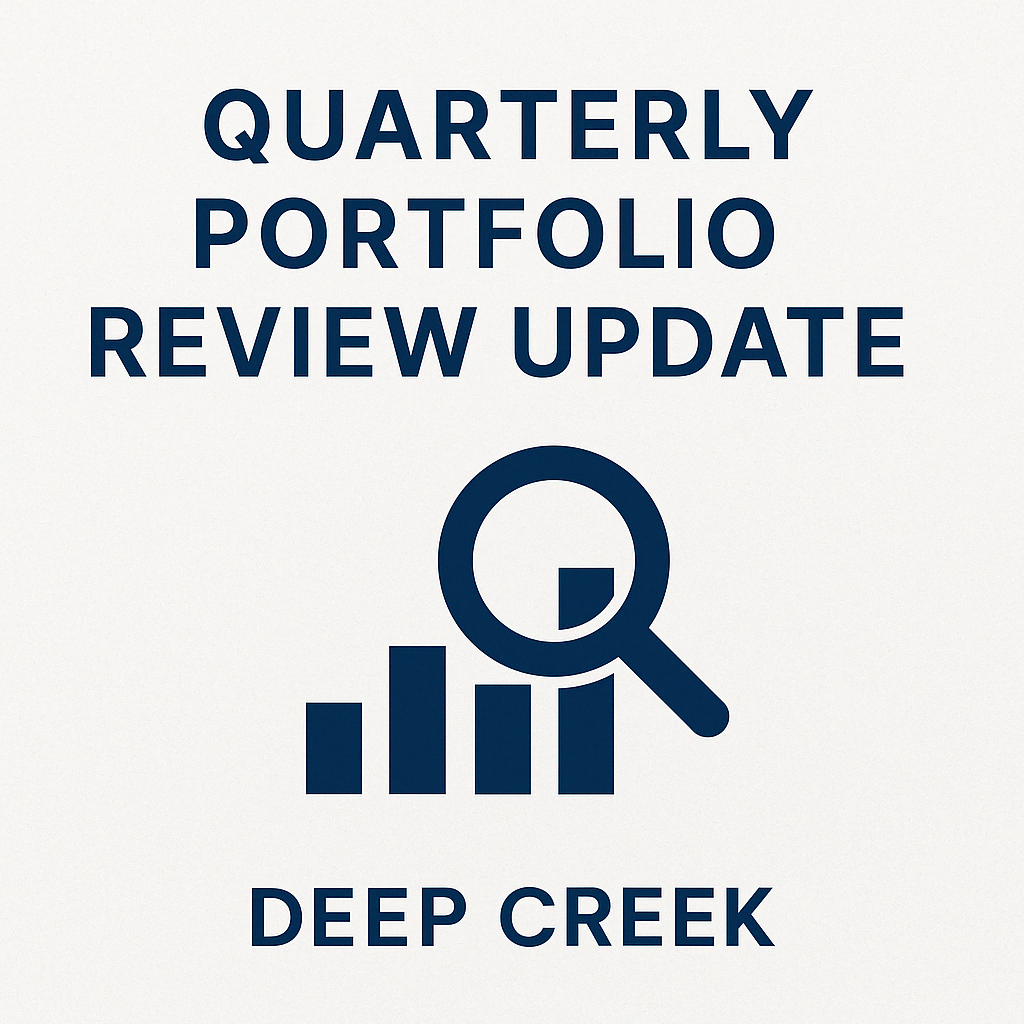How We Make Portfolio Changes (Without Losing Sleep)
Spring 2025 Portfolio Review Update
Every quarter, we step back, evaluate the landscape, and take a fresh look at the investments that drive your financial strategy. Panic and greed are not welcome here – neither will help you or your family. So instead of chasing trends or reacting emotionally, we apply a thoughtful, consistent process that prioritizes your long-term goals.
Step 1: Invite Outside Perspectives
We’ve always believed in the power of seeking wise counsel—something we ask of our clients and practice ourselves. In March, we met with two respected fund families: Touchstone Funds and Franklin-Templeton. These conversations offered valuable insight into fund construction, manager conviction, and areas of opportunity across asset classes.
Step 2: Think, Pause, and Think Again
Just because someone recommends a change doesn’t mean we act on it immediately. Our process includes deliberate reflection on our core principles and our investment philosophy:
- We watched market volatility continue through early spring.
- We compared several options, including swapping FLHY for TMAYX in fixed income. While both funds had similar exposure, FLHY’s lower cost made it the better fit.
- We evaluated a multi-asset fund from Touchstone but stayed the course—our fixed income sleeve needs to stay fixed.

Step 3: Review the Whole Picture
We also took time to evaluate:
- Whether small-cap equity exposure was too high for a year with tariff and interest rate uncertainty (it was). We’ve reduced small-cap holdings by 3% and increased mid-cap exposure accordingly.
- The cash allocation in each model. While 1% worked in theory, we’re moving back to 2% across portfolios to allow for a bit more breathing room and flexibility.
- Adding large-cap ETFs like SPY or QQQM. Though tempting, we ultimately decided that our current quality-focused strategy (especially with SPHQ) continues to perform well—so no change for now.
Step 4: Final Checks Before Rebalancing
Before implementing changes, we model the potential impact across portfolios. We run overlap analysis between equity ETFs, use AI to simulate interest rate impacts on bond funds, and carefully test each update for tax implications and retirement income stability.
Once that’s complete, Ryan (our trading specialist) goes to work behind the scenes. His goal is that each client portfolio reflects the changes in a timely and accurate manner.
So, What Changed This Quarter?
- Reduced small-cap exposure by 3%, reallocating to mid-cap positions (that’s moving from investing in smaller companies more likely to be hurt by investment uncertainty into medium-sized companies with more proven resilience).
- Restored cash holdings to 2%, split between two underlying cash positions.
- No changes to our core fixed income or large-cap equity positions, though we remain ready to adapt if the data tells a different story.
For our faith-based clients using Biblically Responsible Investment models: we conducted a similar review with no changes recommended this quarter.
The Deep Creek Difference
We’re not here to chase headlines or overreact to market noise. Our focus remains clear:
- Invest with intention
- Diversify wisely
- Minimize costs
- Align strategies with your values
Through steady discipline and thoughtful adjustments, we help you build toward a confident future—whether you’re accumulating wealth, drawing retirement income, or just looking to make your next best decision.
Investing in mutual funds involves risk, including possible loss of principal. Fund value will fluctuate with market conditions, and it may not achieve its investment objective. Rebalancing a portfolio may cause investors to incur tax liabilities and/or transaction costs and does not assure a profit or protect against a loss. There is no guarantee that a diversified portfolio will enhance overall returns or outperform a non-diversified portfolio. Diversification does not protect against market risk. ETFs trade like stocks, are subject to investment risk, fluctuate in market value, and may trade at prices above or below the ETF’s net asset value (NAV). Upon redemption, the value of fund shares may be worth more or less than their original cost. ETFs carry additional risks such as not being diversified, possible trading halts, and index tracking errors.



